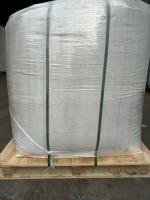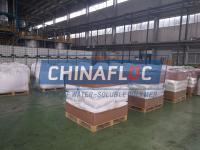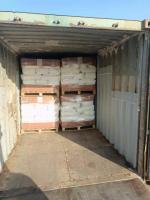Our Products
Product Center / top and largest polyacrylamide maufacturer top three in china

Application of Polyacrylamide
Polyacrylamide (PAM) is one of the most versatile and widely used water-soluble polymers in industrial, environmental, and agricultural applications. It is a synthetic polymer formed from acrylamide monomers, and depending on its ionic character, it can be classified as anionic, cationic, or nonionic. Each type of polyacrylamide exhibits distinct characteristics and mechanisms of action, allowing it to serve as a flocculant, coagulant aid, thickener, lubricant, drag reducer, or binder in various systems. Because of its high molecular weight, excellent water solubility, and ability to modify the surface and rheological properties of liquids and suspensions, polyacrylamide has become an indispensable polymer in wastewater treatment, paper production, mining, oil recovery, and soil management.
The main application of polyacrylamide lies in water and wastewater treatment, where it is used as a flocculant and coagulant aid. In this context, polyacrylamide promotes the aggregation of fine particles and colloids suspended in water. Many natural and industrial wastewaters contain small negatively charged particles that resist settling due to electrostatic repulsion. When polyacrylamide is added, its long polymer chains adsorb onto the surface of these particles, forming bridges that link multiple particles together into larger, heavier flocs. These flocs settle or float more easily and can be separated by sedimentation, filtration, or flotation.
In municipal wastewater treatment, polyacrylamide is used in both primary and secondary treatment stages. During primary clarification, anionic or nonionic polyacrylamide is added to assist the removal of suspended solids, oils, and organic matter. In secondary treatment, cationic polyacrylamide is commonly applied to biological sludge to improve floc formation, settleability, and dewatering efficiency. By facilitating the aggregation of microbial flocs, it helps achieve clearer effluent and reduces the volume of sludge requiring disposal. In sludge dewatering, high molecular weight cationic polyacrylamides are injected into sludge before it enters mechanical dewatering units such as centrifuges, belt filter presses, or chamber presses. The polymer binds the negatively charged particles and water molecules in the sludge, forming dense, compact flocs that release water more readily. The result is a drier cake, lower transportation costs, and more efficient disposal.
In industrial wastewater treatment, polyacrylamide plays a crucial role in removing suspended solids, oils, dyes, and organic contaminants from process water. Different industries—including food and beverage, petrochemical, textile, paper, steel, and mining—produce effluents with varying characteristics. Polyacrylamide is adapted accordingly: anionic polyacrylamides are used when the suspended particles are positively charged (such as metal hydroxides), while cationic polyacrylamides are preferred for negatively charged particles, such as organic colloids or biological sludge. Nonionic types are often applied in neutral systems or as stabilizers in polymer blends. In oil refinery wastewater, for instance, polyacrylamide helps in oil-water separation, breaking emulsions and clarifying effluent before reuse or discharge. In the textile industry, it removes dyes and suspended solids from colored wastewater, improving clarity and reducing chemical oxygen demand (COD).
In drinking water treatment, polyacrylamide is used as a coagulant aid alongside traditional metal salts like aluminum sulfate (alum) or ferric chloride. It enhances floc size and density, accelerates sedimentation, and reduces the required dosage of metal coagulants. Because polyacrylamide itself is non-toxic and used at very low dosages (typically below 1 mg/L), it is safe for potable water systems when manufactured to meet regulatory standards with low residual monomer content.
Another major application of polyacrylamide is in the mining and mineral processing industry, where it assists in solid–liquid separation processes such as clarification, thickening, filtration, and tailings management. Fine mineral suspensions are difficult to settle naturally due to their small particle size and electrostatic stability. When polyacrylamide is added, it binds to particle surfaces and promotes the formation of large aggregates that settle quickly. Anionic polyacrylamides are particularly effective in mineral suspensions containing positively charged species like iron, aluminum, or clay minerals. They are used in coal washing plants, metal ore processing, phosphate flotation, and bauxite refining. In tailings ponds, polyacrylamide accelerates the dewatering of waste slurries and enables water recovery for reuse in processing circuits. This not only conserves water resources but also reduces the environmental footprint of mining operations.
In the oil and gas industry, polyacrylamide plays a central role in enhanced oil recovery (EOR) and produced water treatment. During secondary or tertiary oil recovery, partially hydrolyzed polyacrylamide (HPAM), a derivative of anionic polyacrylamide, is injected into oil reservoirs to increase the viscosity of the flooding water. This improves the sweep efficiency of the water and pushes more oil toward production wells. The high molecular weight of HPAM allows it to form a viscous solution even at low concentrations, improving displacement efficiency and reducing water channeling. In produced water treatment, cationic and anionic polyacrylamides are used to flocculate suspended solids and separate residual oil droplets, enhancing water quality before reinjection or discharge. In drilling operations, polyacrylamide serves as a viscosifier and fluid loss control agent in drilling muds, stabilizing boreholes and preventing fluid invasion into permeable formations.
In the pulp and paper industry, polyacrylamide serves multiple functions. It is used as a retention aid, drainage aid, and dry strength additive in paper manufacturing. During the papermaking process, fine fibers, fillers, and pigments tend to remain suspended in water. Polyacrylamide helps retain these components on the paper sheet by forming bridges between fibers and fines, improving paper strength and formation uniformity. As a drainage aid, it accelerates water removal from the pulp slurry on the paper machine wire, increasing production efficiency. Cationic polyacrylamides are particularly effective because they interact strongly with anionic cellulosic fibers and fillers. Additionally, polyacrylamide is used in paper mill wastewater treatment to remove suspended solids, color, and organic matter before water is reused or discharged.
In agriculture and soil management, anionic polyacrylamide is employed to prevent soil erosion, enhance infiltration, and improve soil structure. When applied to irrigated fields or construction sites, polyacrylamide binds soil particles together, reducing detachment and runoff during rainfall or irrigation. It also increases water infiltration into the soil, reducing crusting and promoting better crop germination. The U.S. Department of Agriculture (USDA) has recommended the use of anionic polyacrylamide for soil stabilization and erosion control in furrow irrigation and stormwater management. In addition, polyacrylamide can be used as a water retention aid in arid regions, helping soils retain moisture for longer periods.
In chemical and construction industries, polyacrylamide functions as a thickening and rheology-modifying agent. Its long polymer chains increase the viscosity of aqueous systems even at low concentrations, which makes it suitable for applications such as adhesives, grouts, and coatings. In construction, it improves the stability of cement slurries and prevents segregation of fine particles in concrete. In detergents and personal care formulations, polyacrylamide acts as a stabilizer and texture modifier.
In environmental applications, polyacrylamide is used for sediment control, industrial process water recycling, and sludge management. It helps remove turbidity from stormwater runoff, clarifies pond and lake water, and enhances filtration performance in water treatment plants. Its use reduces the load on filtration systems and decreases chemical consumption.
Polyacrylamide’s functionality depends strongly on its ionic nature:
-
Anionic polyacrylamide: Best for suspensions with positively charged particles, such as metal oxides and clays. Used in mining, paper, and industrial wastewater.
-
Cationic polyacrylamide: Best for negatively charged particles, organic matter, and biological sludge. Used in municipal wastewater, sludge dewatering, and papermaking.
-
Nonionic polyacrylamide: Suitable for neutral systems and as a stabilizer or co-polymer additive where charge interactions are minimal.
The polymer’s performance is influenced by factors such as molecular weight, charge density, pH, and mixing conditions. Correct dosage and adequate mixing are essential to form optimal flocs without overcharging the system, which could cause re-dispersion.
Polyacrylamide also finds limited use in cosmetic and biomedical formulations as a rheology modifier or gel-forming agent, although such applications require highly purified grades with extremely low residual acrylamide content.
In summary, the application of polyacrylamide spans a broad range of fields, all centered on its ability to modify water behavior, improve particle aggregation, and facilitate solid–liquid separation. In water treatment, it ensures clear effluent and efficient sludge handling. In mining and oil recovery, it improves process efficiency and resource utilization. In agriculture, it conserves soil and water, while in paper production, it enhances quality and productivity. Its diverse chemical versatility—through anionic, cationic, and nonionic forms—makes polyacrylamide one of the most important industrial polymers in modern environmental and process engineering. The continued development of environmentally friendly, biodegradable, and low-residual variants ensures that polyacrylamide will remain a cornerstone material in sustainable water and resource management for decades to come.



701_small.jpg)

